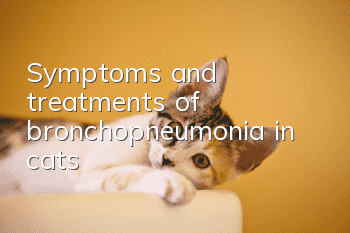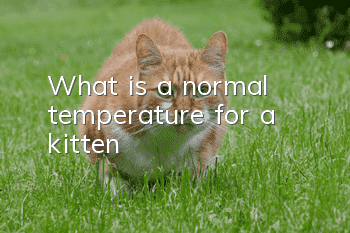Symptoms and treatments of bronchopneumonia in cats

Analysis of the causes of bronchopneumonia in cats
Feline bronchopneumonia will cause tracheobronchial symptoms such as runny nose and cough in cats, and will be accompanied by elevated body temperature and shortness of breath. As a qualified owner, when a cat shows discomfort and you are unable to accurately judge whether the cat's disease is serious, please seek treatment from a professional pet doctor in time to avoid delaying the condition.
There are many causes of bronchopneumonia in cats: further development and spread of tracheobronchitis, respiratory syndrome, bronchial parasite invasion, long-term cold illness, bacterial infection; stimulation of high fever and cold, inhalation of aerosol particles, vomiting or other foreign bodies; secondary to purulent diseases such as metritis and mastitis; certain molds (such as Aspergillus aflatoxin, Aspergillus fumigatus, Candida, etc.) can cause fungal pneumonia.
Clinical symptoms of feline bronchopneumonia
Feline bronchopneumonia is an acute or chronic inflammation of the cat’s bronchi and lungs caused by irritation. There are many causes of irritation, and it can also be secondary to certain diseases. Feline bronchopneumonia is more common in older cats and young cats, and is more common in winter and summer.
At the beginning of the disease, sick cats often have symptoms of tracheobronchitis such as runny nose and cough. Subsequently, the body temperature rose to about 40C, the breathing rate increased, and the breathing was rapid and shallow. Bronchial rales, if infected by pathogenic organisms, are often accompanied by symptoms of other organ lesions. In the later stages of pneumonia, the systemic symptoms become more obvious, including depression, lethargy, loss of appetite or inability to eat, and extreme exhaustion.
Treatment of feline bronchopneumonia
Feline bronchopneumonia is an acute or chronic inflammation of the cat’s lungs and bronchi caused by stimulation from environmental and other factors. The treatment principles of this disease are to reduce inflammation and cough, stop exudation, and promote absorption and elimination.
1. Antibacterial and anti-inflammatory: Antibiotics and sulfa drugs can be widely used for treatment. Acetylspiramycin, 20 to 30 mg/kg body weight per day, orally divided into 3 to 4 times; in addition, ampicillin, chloramphenicol, kanamycin, tetracycline, synergistic sulfonamides, etc. can be used.
2. Relieve asthma and relieve cough: Apply 0.03 g/ml of ephedrine intramuscularly in 3 times.
3. Stop leakage: 10% calcium gluconate 10 to 15 ml, intravenous drip.
4. Liquefaction of thick sputum: Using soluble expectorants such as Bikepin or acetylcysteine can help liquefy and cough up the exudate in the bronchus and lungs.
5. Mycostat drugs: For fungal pneumonia, amphotericin b can be used, 0.3 to 0.5 mg/kg body weight, intravenously.
- Can kitten diarrhea heal on its own?
- How to correct a cat that scratches the ground next to its food bowl
- How to identify a false pregnancy in a female cat
- What to do if Birman cat has urinary stones. How to treat Birman cat to have urinary stones.
- What are the benefits of giving probiotics to cats?
- Why does my cat’s butt bleed?
- How to remove black lumps on cat's nose?
- Why do American Bobtail cats need to be neutered?
- Are Ragdoll cats suitable for novice owners? Things to note for newbies raising Ragdoll cats!
- Which pet attracts fleas the most? Take you through the life of a flea!



